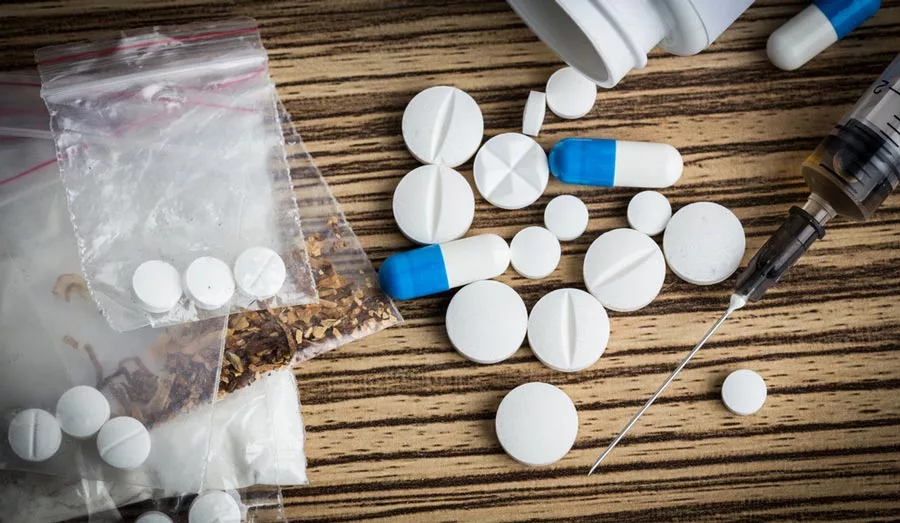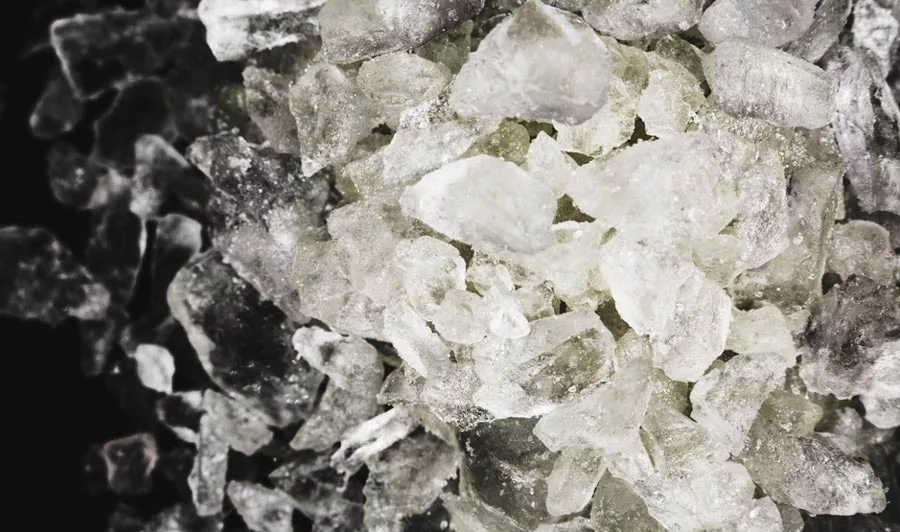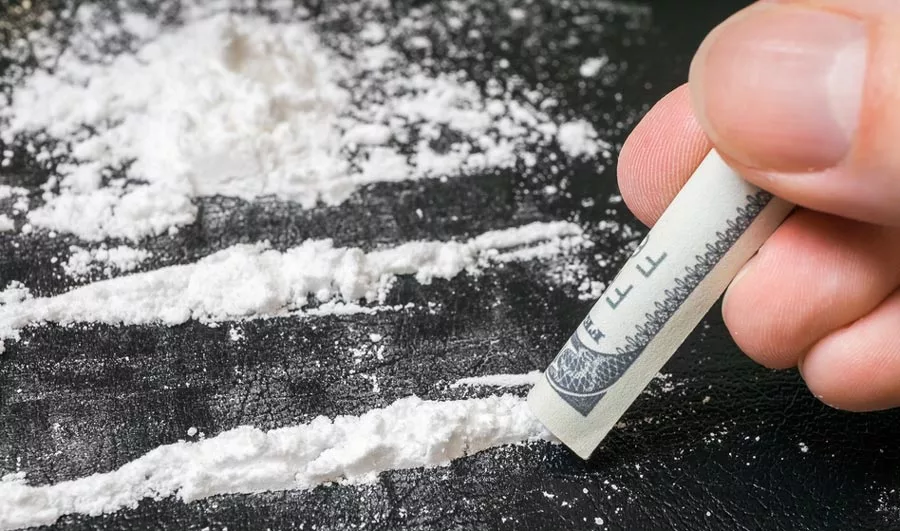10 Most Dangerous Drugs

The Top Dangerous Drug Risks
In a world where several drugs compete for headlines regarding overdose deaths and the physical dangers of drug abuse, how do you rank the most dangerous drugs? How do you classify and categorize dangerous drugs?
Do you make two separate categories: one for illicit drugs and one for legal substances like prescription opioids? Do you rank substances that only cause drug overdose deaths?
With so many dangerous drugs on the market, there’s no shortage of contenders for this list. If you’ve wondered what the most dangerous drugs are, we’ve categorized the top 10 and broken down how we arrived at our conclusion.
How Do You Rank the Most Dangerous Drugs?
So how did we come up with a list of the most dangerous drugs? We used a combination of several elements that include the potential for drug abuse and drug addiction, the way the drug acts on the central nervous system (do they cause complete incoherence, unconsciousness, etc.), the total number of drug overdose deaths associated with any particular drug, in addition to the withdrawal symptoms.
We felt it was important to include withdrawal, as some drugs may not cause immediate overdose or lead to incapacitation, but they may have deadly withdrawal symptoms. Whether a drug has medicinal value was also a factor we took into consideration. If a drug had some form of beneficial use on the prescription drug market for severe pain or a form of mental health disorder, we might not consider it as dangerous as a drug that’s solely designed for substance abuse purposes.
The 10 Most Dangerous Drugs

1. Alcohol
The number one most dangerous drug on our list is alcohol. We chose alcohol as number one among the most dangerous drugs for multiple reasons. First, it’s the most widely abused drug globally by all cultures. There aren’t many cultures where alcohol isn’t at least accepted as a social drug. This opens the door for long-term dependence, regardless of the intended moderation.
Second, alcohol causes a huge number of deaths directly and indirectly. The immediate dangers of alcohol consumption include diseases involving the liver, stomach, and bladder cancers, and more. When it comes to collateral damage, there’s no denying how deadly alcohol is when someone under the influence gets behind the wheel.
Third, alcohol abuse wreaks havoc on the central nervous system and can render you completely unconscious with moderate to heavy consumption. In addition, alcohol separates itself into a category only joined by other dangerous drugs – the withdrawals associated with alcohol can cause death.
And on top of all this, it’s the most accessible drug on the list. It doesn’t matter how old you are, age laws or not – you can obtain alcohol fairly easily and almost any country on the planet.
Last but not least, alcohol has no medicinal value and is created solely for getting intoxicated.
2. Fentanyl
Choosing the number 2 spot was difficult, but it’s difficult not to rank the number one killer in overdose deaths near the top of the list of the most dangerous drugs. Fentanyl is one of the most powerful opioids on the market, and even worse – it’s still legal.
And while technically, the legality does give it medicinal value, a drug reserved mostly for those with a terminal outlook is hard therapeutic for the average individual. If anything, the legalities of fentanyl make it even more dangerous, as it’s just another source for this dangerous drug to end up in the wrong hands.
The Primary Cause in an Explosion of Overdose Deaths
With fentanyl reaching epidemic proportions, it’s definitely one of the most dangerous drugs on the market, and the potential for overdosing on such a minor amount, combined with the number of people actively abusing fentanyl, makes this drug truly frightening.
Fentanyl also has the ability to render you completely unconscious, making it even more unpredictable than other drugs.
Addiction Treatment that
Just Works
Individualized treatment programs delivered in a comfortable, relaxed setting promote healing in your recovery journey.
3. Benzodiazepines
Benzos are another legal substance listed as one of the most dangerous drugs – only this one is actually prescribed in fairly large numbers to the average working-class citizen. What makes benzos so dangerous is the fact that they’re widely available through legal means and via the black market.
They exist in large quantities, and there are so many variations of them, it also makes them unpredictable for people who acquire them illegally. There’s also a risk of fentanyl adulteration, but that exists with nearly every drug on the market, unfortunately.
What makes benzos so deadly compared to other drugs is the fact that the risk of overdose increases exponentially when mixed with other drugs. The overdose factor isn’t so high individually, but combined with opioids or alcohol and it’s almost a guarantee.
In addition, when compared with other dangerous drugs, benzos have one of the most dangerous withdrawal periods and is joined only by alcohol as the only two substances with lethal detox side effects.
4. Crystal Meth

Many may argue that other drugs belong ahead of crystal meth – but there are plenty of reasons it lands at number four on our list. It has no medicinal value – not in the illicit form. We can’t compare this to legal stimulants like Adderall because they’re not even close when it comes to the manufacturing process – not to mention one is completely illegal.
Crystal meth is dangerous currently because it’s causing its own epidemic – and it’s also leaving a record number of users homeless and with crippling mental health disorders. The long-term effects are arguably deadlier than the short-term effects, but both are fatal.
Another reason meth is so high on the list is it’s currently joined by fentanyl as a deadly cocktail that hundreds of thousands are falling victim to. This one-two combination is becoming extremely common, which is even more cause for alarm, considering one is a stimulant and one is a depressant.
5. Heroin
There are plenty of people who read this list and will likely argue that heroin belonged in a higher position. However, considering the takeover of fentanyl, we believe that heroin has declined in popularity and general availability. This isn’t to say that heroin isn’t a dangerous drug – because it’s just as dangerous as it ever was.
However, it’s taken a back seat to fentanyl because of the substantially lower price of its synthetic counterpart. That, and with the widespread distribution and availability of Narcan, the chances of someone living through a heroin overdose are much higher. There are some instances of three and four doses not being enough to bring someone back from a fentanyl overdose – but if the drug in question is solely heroin, Narcan still does the job.
6. Crack Cocaine
Crack cocaine is another drug that’s been on a downturn recently – but it hasn’t disappeared by a long shot. This drug is extremely addictive and still one of the most dangerous substances on the streets. Drug use involving crack cocaine has declined sharply with the rise in crystal meth, but it still has the potential to cause serious health complications and lead to fatal overdose.
Drug use involving crack may be a far cry from the heights the drug once rose to during the epidemic of the late 80s and early 90s. However, this has given way to the even deadlier epidemic of fentanyl and crystal meth.
What makes crack so dangerous is the risk of sudden overdose or cardiac arrest if a large enough amount is ingested. That, and combined with excessive alcohol consumption, the chances for complications grow even larger.
7. Nicotine
Many people may forget about nicotine as a deadly drug altogether. However, according to numbers from the Centers for Disease Control and Prevention, deadly ailments as a result of tobacco and nicotine are still one of the number one killers in America.
While nicotine may not be looked at as an immediate killer, the collateral damage caused by this drug is undeniable. And what’s worse, it’s one of the most widely consumed drugs in the country and definitely one of the most widely available.
Raising the legal age to 21 may have caused a minor change in the distribution of nicotine and tobacco products, but we find it difficult to believe that it did anything of significance to decrease overall consumption. According to numbers from the agencies mentioned above, nicotine use in the form of cigarettes has declined among certain age groups.
However, the rise in popularity of vape products has only worked to supplement the decline in the tobacco category.
Addiction Treatment that
Just Works
Individualized treatment programs delivered in a comfortable, relaxed setting promote healing in your recovery journey.
8. Methadone
Methadone definitely has a spot on the list as an extremely dangerous prescription drug. This synthetic opioid is stronger than heroin, with a longer half-life, and has a strong affinity for addiction in those who aren’t carefully using it as a maintenance therapy.
There are also plenty of users who abuse methadone illegally, obtaining it from those who sell their methadone doses on the black market or fraudulent prescription drugs. Although not the most dangerous drug in the synthetic opioid category, it’s still highly addictive and extremely difficult to detox from.
Methadone also causes liver disease and other damage to internal organs and falls under the combination category that enhances the risk of overdose deaths when mixed with other substances. Combining benzodiazepines and methadone, or alcohol and methadone, are two huge driving forces when it comes to overdose fatalities.
Believe it or not, the accessibility factor is also high with methadone. While highly regulated, nearly anybody can enroll in a methadone clinic without much effort or pushback from doctors.
If you thought that clients having to appear at the clinic each day made it any less dangerous, think again. There are plenty of documented cases each year of those who get take-home doses not properly securing their medication and children tragically ingesting this drug, leading to fatal overdose deaths.
9. Cocaine

Some could make the argument that cocaine and crack fall under the same category. And while they belong under the same dangerous drug classes, their potential for addiction and fatalities are miles apart.
However, that doesn’t make cocaine any less of a threat, especially when you drill down into two specific categories: sudden death from cocaine toxicity (especially in users who inject) and long-term health complications (again, especially in users who inject).
Suffering a life-threatening cardiac event is highly probable in those who inject cocaine. A large dose directly to the bloodstream and brain is more than enough to send the body into cardiac arrest, stroke, or worse. This is one of the leading causes of short-term death for those who abuse powder cocaine.
Long-term health consequences are also an issue with those who abuse cocaine. The highly addictive drug can lead to severe nervous system damage, long-term cardiac and respiratory problems, kidney disease, and a ton of cognitive issues. Shaking, tremors and other issues are frequently reported with long-term use. Combining cocaine with other drugs like alcohol, a central nervous system depressant, make it even more deadly.
10. MDMA
The final spot on the list belongs to MDMA. Albeit not the menace it was in the early 2000s, MDMA is still wreaking havoc on black market users. The rise in deaths associated with MDMA has spiked recently with the fentanyl epidemic, as many Ecstasy pills have been found to be laced with synthetic opioids.
Pure MDMA, known as Molly, is the powdered version of the drug and can lead to just as many health hazards as pressed MDMA pills. The chemical makeup of MDMA isn’t far off from that of methamphetamine and often leads to many of the same challenges when it comes to short and long-term risks. Overheating, stroke, and heart attack are all potential causes of death regarding the short-term use of MDMA.
Long-term risks include many of the same cardiovascular and central nervous system risks as crystal meth. In addition, long-term abuse can lead to depression and even suicide because of the lack of the body’s ability to produce serotonin and dopamine.
Resurgence Texas Can Help With Any of the Drugs Mentioned
At Resurgence Texas, we have a significant amount of experience helping clients achieve long-term recovery from any of the substances mentioned on this list. Even if you’re suffering from co-occurring disorders and abusing multiple drugs, we have dual-diagnosis treatment options that can provide the help you need.
For more information regarding the therapy options provided at our facility, contact a member of our admissions team today!
Addiction Treatment that
Just Works
Individualized treatment programs delivered in a comfortable, relaxed setting promote healing in your recovery journey.
